Painting a Big Cat in Watercolour
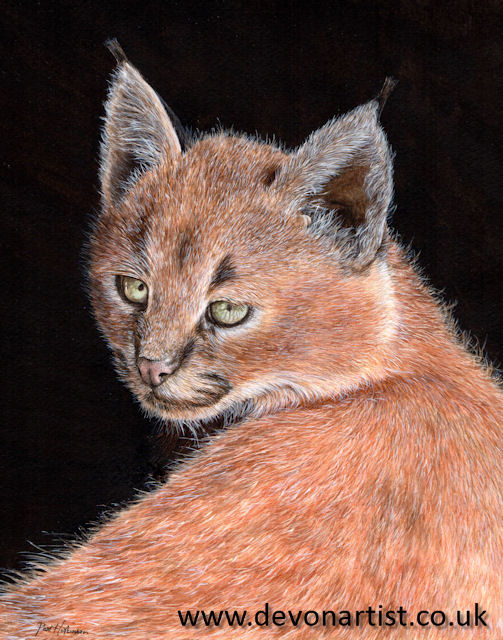
Whilst preparing some Facebook posts, I came across some work in progress (WIP) shots of when I was painting a big cat in watercolour. This is a Caracal kitten also known as a Desert Lynx. I actually completed it several years ago. Since working on this painting, I have really refined how I achieve realistic hair and fine detail on animals. Some of my techniques and materials have indeed changed. However, looking at these old photos, they still give a good overview on how to tackle a project like this.
Initially, I start from a fantastic reference photo. This one was taken by our friend Emma Rose Buck, and my grateful thanks to her for allowing me to work from it.
Drawing Out
The first stage is to get the image transferred to my watercolour paper, I use Bockingford. I would have used the old-fashioned method of covering the back of my printed image with pencil and tracing over the top. I’ve now discovered graphite paper, which really speeds up this process!
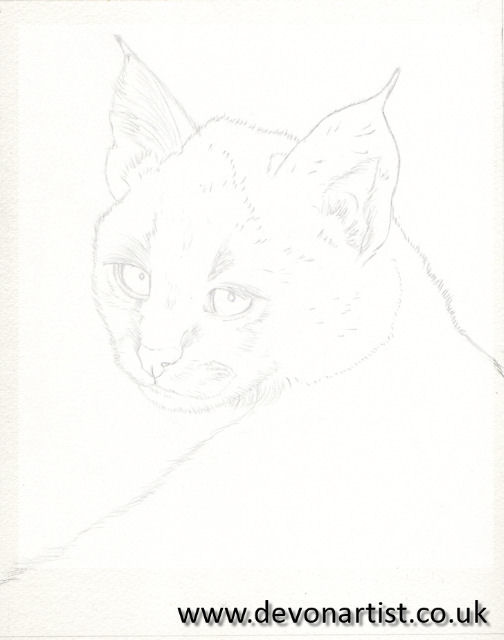
The Painting Process
For anyone who follows my work, you will know that I love working on animal eyes. A cat’s in particular are full of depth and interest. So once I had applied a loose background wash, the eyes were the next stage to this painting. It is important to retain the vibrancy of colour within the eye. But at the same time there needs to be highlights and hints of glassiness to make them look real.
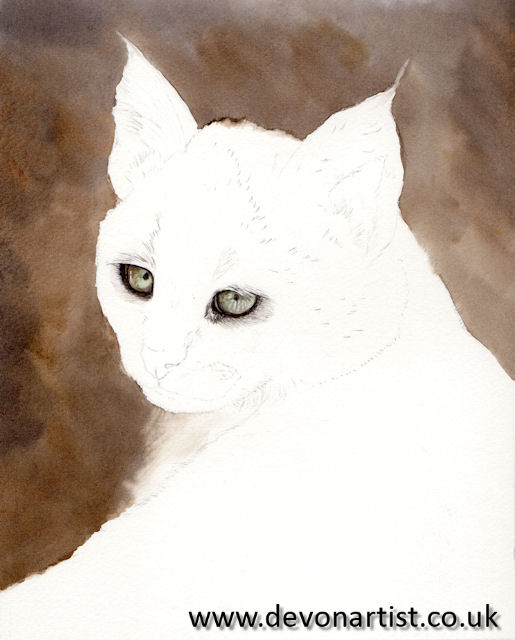
As long as I am happy with the eyes, I will move on to applying some foundation washes to the rest of the cat. These give a basis to work off for the fur. They can be varied and darkened with additional layers to really develop the form and shape. In the photo below, you can see that I have added some white highlights.
White Highlights
Unlike many watercolourists, I tend not to reserve the white of the paper. It would be virtually impossible to reserve every hair line anyway. I prefer to add the highlights as my last layer with white paint. These days, I almost always use an opaque white watercolour. However, in the days of painting this big cat in watercolour, I would have probably been using white acrylic or even gouache. They all work, the watercolour white is the more difficult to get right. You may want to use one of the other options, but it is all a matter of personal preference.
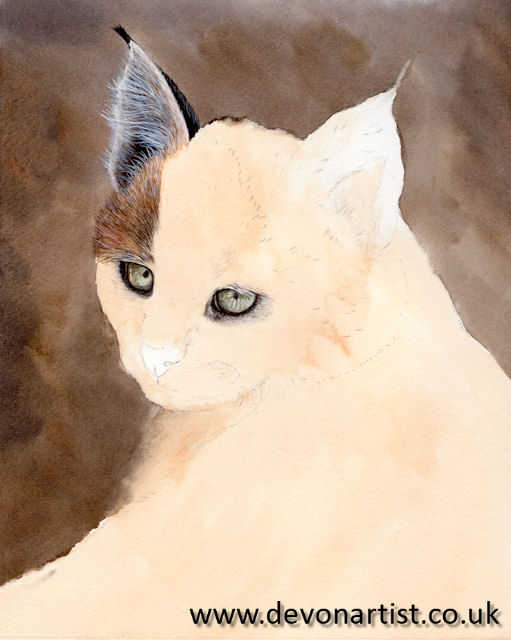
I tend to work in sections on any painting, usually starting with the head and moving across and down my subject. It ensures you are not always fighting drying times. It also allows you to really concentrate on an area and fine tune it. However, it is really important to keep stepping back and viewing your work as a whole project. Making sure that all the different sections work together, are in proportion and the right colour. In the photo below, I am gradually building the layers of detail on the head. As before, working from light to dark and finishing off with the white. Again, it is personal preference how many layers you add, there are no hard and fast rules.
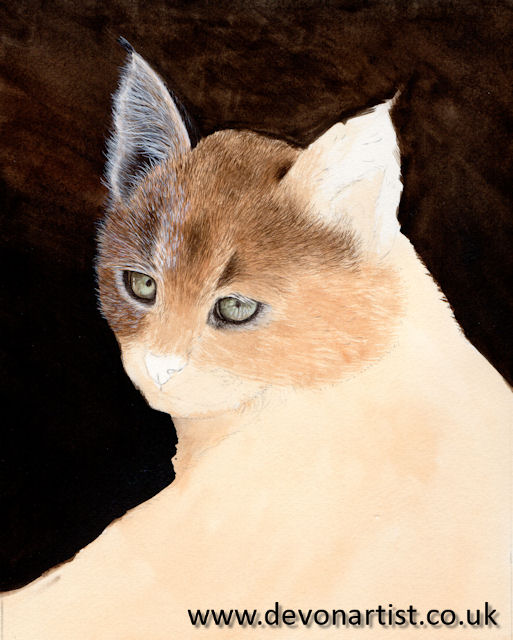
Creating Realism
Below you can see the next stage of the painting where I have added the white to the forehead area. It really does start to bring the Caracal to life. Should the white seem too intense, try watering it down a little more. It then dries duller, or introduce a weak wash of colour over the top to tint it. This must be completed in one pass of your brush, or you risk muddying your colours.
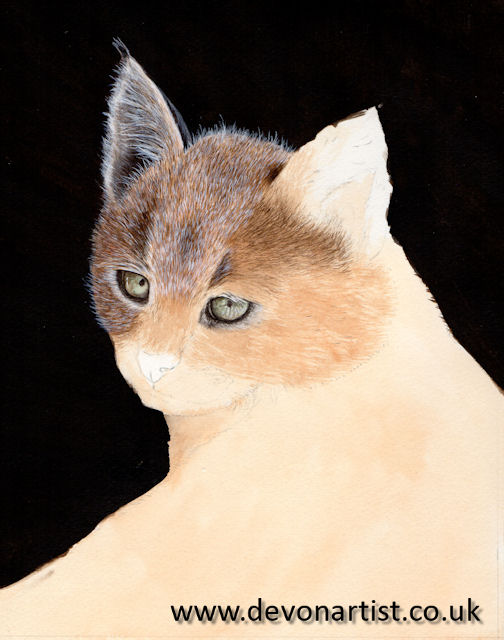
The second ear is worked in exactly the same way and blended in to match the areas that have already been completed. When working on a reasonable size project like this, always make sure that you mix up enough paint. Nothing worse than running out and having to try and remember what you did to create a particular tone!
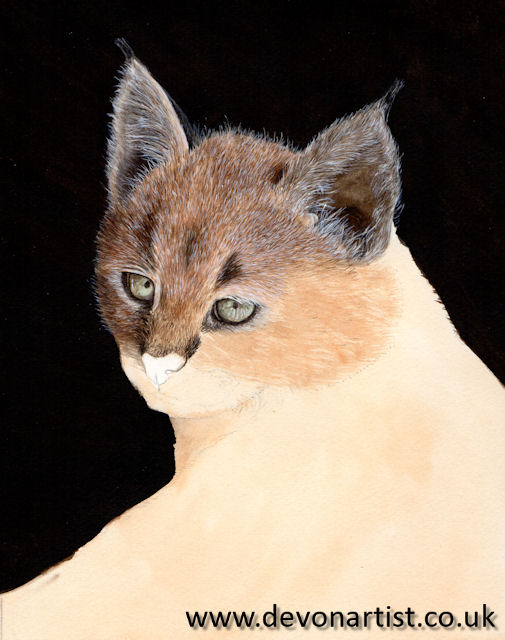
Building Layers
Applying layer upon layer of fur can be a very time-consuming process. Often with the under layer I will use a homemade replicator brush. This is similar to, but not as uniform as, a rake brush. It allows me to paint several small lines at once and cover a large area much more quickly. However, the result can look too even, as if it has been combed. It is therefore a technique that I only use on layers that are underneath and forming the depth rather than the visible detail.
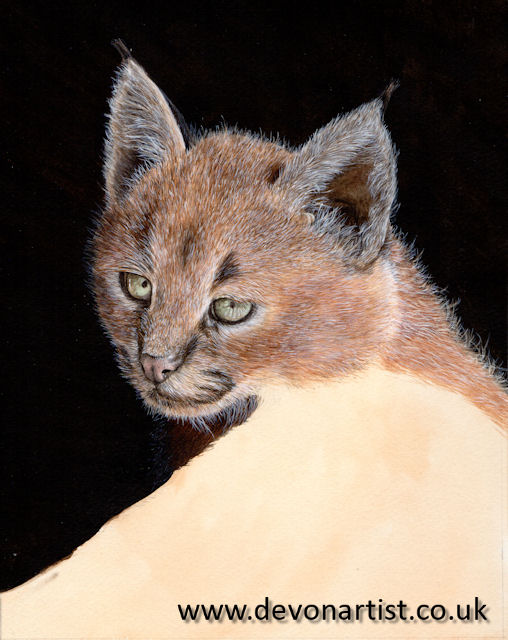
When you are near to completing a painting, it is often a good idea to take a complete break away from your work. Take yourself off for a cuppa and come back with fresh eyes. You are more likely to spot areas that you need to work on or adjust. This could well be sections that you were previously unable to see whilst you were so involved in the painting process.
Hope you enjoyed this overview of my painting of a big cat in watercolour, until the next time – keep those brushes wet! Paul







2 responses
This piece is so incredibly beautiful ( says a not so great cat lover) … really love the (limited) palette. Fantastic tutorial/words.. from a master pur sang!
Thank you so much Erna, This was quite a large painting.